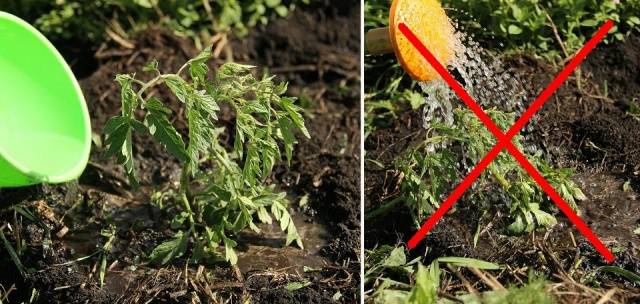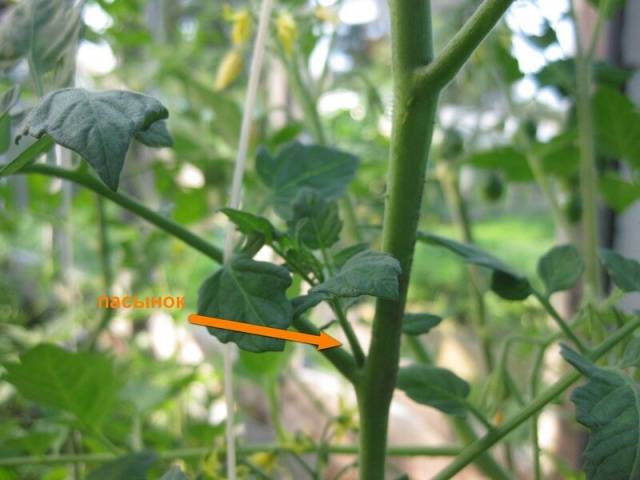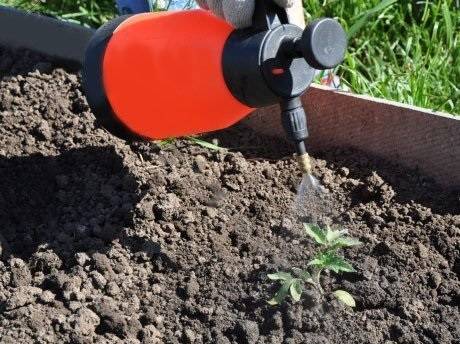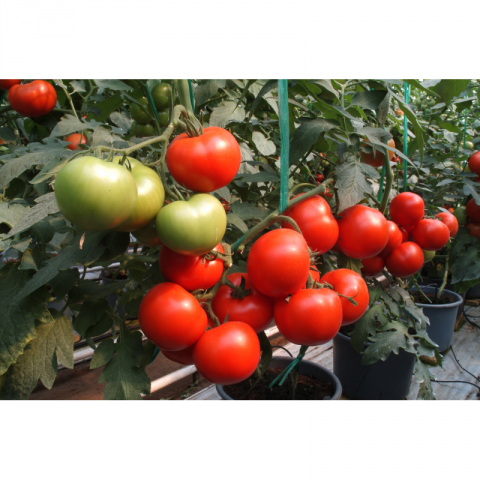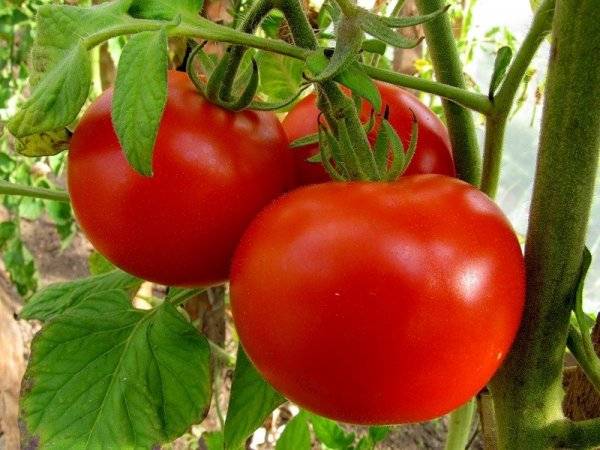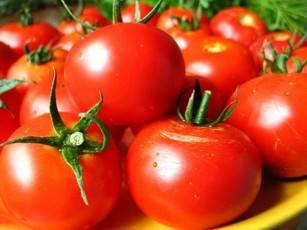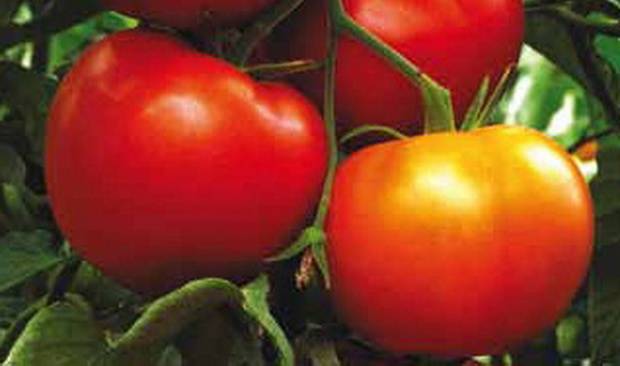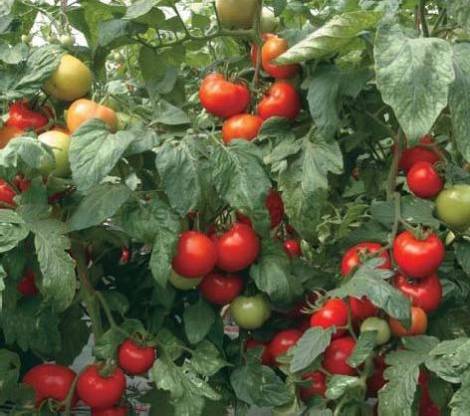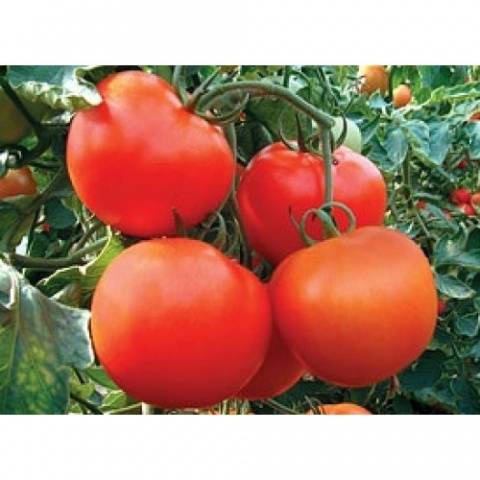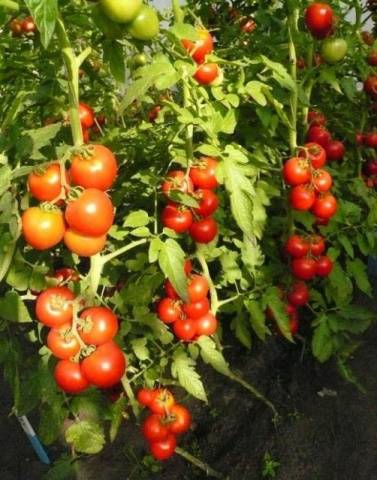Content
Most people love tomatoes. They are respected for their taste. In addition, tomatoes have antioxidant and anti-cancer properties, they contain a variety of vitamins and minerals, as well as serotonin - the "hormone of joy".
What are semi-determinate tomatoes
Tomatoes are deservedly a popular vegetable in our gardens. Recently, the attention of gardeners has been more attracted by semi-determinant tomatoes. Here, the characteristic is based on such a criterion as the height of the bush. There is also determinant tomatoes (stunted) and indeterminate (tall).
Semi-determinant tomatoes occupy the middle position, have adopted the best qualities from determinant and indeterminate varieties. For example, the harvest can be obtained earlier than from indeterminate ones, by 10 - 12 days. And this is perhaps the key factor. Plants are resistant to temperature extremes and diseases. Tomatoes love warmth, and most regions of our homeland cannot boast of long sunny summers. therefore tomatoes are grown in greenhouses... And you have to reckon with the area.
Features of appearance
Plants maximize the use of greenhouse space. They reach a height of 150-200 cm, usually after 10-12 inflorescences have formed, with a frequency of every 2-3 leaves. The first inflorescence is formed over 9-10 leaves. Narrow internodes up to 15 cm and uniform formation of inflorescences make it possible to get a crop evenly.
The specifics of growing
The cultivation of semi-determinate tomatoes has some peculiarities. But in general, the technology is similar to the generally accepted one. So, the features:
Seedling
Do not allow the seedlings to bloom. If this happens, then it is better to remove the inflorescence. Seedlings should be strong, dark green with 7-9 leaves. Plant 2 - 3 plants per square meter. meter.
Temperature regime
Control the temperature in the greenhouse. Still, this is the main criterion for obtaining a good harvest result. When planting seedlings, the soil temperature should be at least +15 degrees. For tomatoes, the optimum temperature is + 22 + 25 degrees during the day, at night not lower than +15 degrees. Temperatures that are too high or too cold have a negative effect on the plant. It stops growing, no fruits are set. In semi-determinant tomatoes, this can cause a verchkovka, the plant stops growing upward.
Watering
Tomatoes are moisture-loving plants. But they can do without watering for a short time.
Seedlings, after planting in the greenhouse, should be watered frequently, but not poured. Drying of the topsoil serves as a guideline. An adult plant, before the ripening of tomatoes, can be watered 2 times a week, but very abundantly. It is required that the soil is saturated with water by 15 - 20 cm. And during the ripening of tomatoes, watering is required frequent. However, keep in mind that excess moisture can lead to the development of fungal infections. Remember that tomatoes don't like water getting on their leaves and stems. Therefore, water exclusively at the root, do not use a watering can and a spray gun when watering. Watering at the root also achieves one more goal. In the greenhouse, humidity does not increase, which should be at the level of 50 - 60%.
Stepping
Bush formation
It is best to form a plant into 2 stems.The strongest and most viable stepson is formed under the first brush, he will give good fruits. From it, form the second stem. Form 2 - 3 brushes on the lateral shoot, 3 - 4 brushes on the main stem.
Shape your crops with additional means. Thin the first two brushes, leaving 3 - 4 tomatoes. Form other brushes for 6 - 8 tomatoes, remove the gnarled ovary.
To ensure that the edging process does not threaten the amount of the crop, always leave backup stepsons on the plant. Delete if new stepchildren appear.
Removing stepchildren
Stepsons are lateral shoots. Stealing is their removal. It is carried out in order to speed up the ripening of tomatoes and increase their size. For gardeners, it is akin to a kind of ritual. This must be done, otherwise you will get a huge amount of foliage and a small amount of tomatoes. In addition, when pinching, the illumination of the plants is improved and contributes to an earlier harvest. Remove stepchildren when they have reached a length of 5 - 6 cm at least once every 10 days. It is best to pinch in the morning, it is easier to break off the stepsons, and the wound immediately heals. If pinching is carried out less often, then it is already much more difficult to determine what needs to be torn off. And tearing off a large stepson can harm the stem.
Removing leaves
In addition to pinching, the leaves themselves are removed. It happens that gardeners remove all the leaves, ostensibly in order to speed up the ripening of tomatoes. The opinion is wrong. The plant will begin to restore green mass, the fruits will become irrelevant at all. Prune the leaves without fanaticism. It is necessary to remove leaves that are in contact with the ground. This is done to prevent late blight infection. If the plants are in contact with leaves, then you can cut them partially. And then the tomatoes will receive plenty of sunlight and carbon dioxide.
Top dressing
From semi-determinant tomatoes, it is possible to get an early harvest, this requires timely feeding of the plants. A flowering plant needs mineral fertilizers, in which the emphasis is on the phosphorus content. The ripening process of tomatoes will require the addition of potassium. The appearance of the plant will tell you what trace elements it lacks. The slow growth of the plant and pale leaves indicate that there is enough nitrogen in the tone. Excess nitrogen leads to the formation of rich greenery, the plant "fattens", there may be no flowers and tomatoes. A purple shade of greenery indicates a lack of phosphorus, and its excess indicates yellowing of the foliage and its fall, the ovary also falls off. The plant can die if there is not enough potassium, and its excess leads to the appearance of dull spots on the leaves.
If it is not possible to apply organic fertilizers, and these include peat, manure, chicken droppings, then feel free to apply mineral fertilizers. Read the instructions and feed the plants. It is better to use complex mineral fertilizers that contain several elements necessary for plants.
Tomato varieties
Magnus F1
Medium early, fruits appear in 95-105 days after germination. Tomatoes are flat-round in shape, unripe are light green, and ripe ones are bright red, weighing 130 - 160 g. They tolerate transportation well. Good taste. Suitable for canning and fresh salads. The plant resists disease and temperature extremes well.
"Khlynovsky F1"
Tomatoes of this variety ripen 105 - 110 days after germination. The fruits are large, fleshy, weight up to 220 g. Ripe tomatoes are red in color.
The plant is resistant to disease and temperature extremes. Suitable even for beginners.
"Baron F1"
An early ripening variety, the fruits ripen 108 - 115 days after germination. Ripe tomatoes are red in color and flat-round in shape. 122 - 134 g fruit weight, good taste. Resistant to diseases, tolerates temperature fluctuations well.
Also suitable for those who are taking their first steps in growing tomatoes. Will not cause much trouble.
"Merchant F1"
High-yielding hybrid, fleshy tomatoes, large, fruit weight 130 - 160 g.
Stored for a long time, not flabby at room temperature for up to three months. Small tomatoes can be stored for up to 6 months.
"Gunin F1"
Early ripening variety, ripening of fruits 100 - 110 days from germination. Tomatoes of good taste, weighing up to 120 g.
The plant tolerates adverse natural conditions well, which makes it possible to get fruits for a long time.
"Gravity F1"
Early maturing, high-yielding variety. Tomatoes are slightly flattened, bright red in color. They have a rich aroma and excellent taste. Tomatoes are large, 200 - 220 g. The variety is resistant to diseases.
"Silhouette F1"
An early ripe hybrid, easy to grow, the fruits are dense, brightly colored, weight up to 160g, they tolerate transportation well.
"Yvette F1"
Very early hybrid, disease resistant. Tomatoes are round, weighing 140 - 150 g, resistant to transportation, well stored for up to 30 days.
Red arrow F1
Reliable hybrid, leafy plant, shade-tolerant. Plants can be planted tightly to save space. The mass of tomatoes is 90 - 120 g. The plant tolerates temperature changes well, and is resistant to diseases. Tomatoes are early ripening, they tolerate transportation well.
Eagle beak
Tomatoes of an unusual beak-shaped shape, weighing up to 800g. Tomatoes are fleshy, juicy, have a rich taste, well stored.
An overview of one of the varieties is presented in the following video:
Conclusion
Plants that can withstand diseases and temperature fluctuations, in addition, due to their size, allow the maximum use of the size of the greenhouse, greatly facilitate the life of gardeners. And having knowledge and adherence to basic agricultural technologies will undoubtedly lead you to a well-deserved bountiful harvest.

